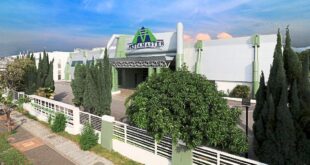NEW YORK: There’s a lot of talk about bringing manufacturing back to the United States as new factories spring up across the country. But the old ones aren’t doing so great.
US manufacturing activity contracted for a ninth straight month in July, according to data published Tuesday.
That’s a sharp contrast with the surge in factory construction – in the wake of recent subsidies enacted by Congress and President Joe Biden’s administration – which delivered a boost to growth last quarter.
It will be a few years before the new plants can actually turn out things like computer chips and electric-vehicle batteries.
For now, firms and forecasters alike are wondering whether the current woes merely reflect a post-pandemic reset, or if they’re signals of a wider economic downturn to come, as they often have been in the past.
Take Correct Craft, for example. The Orlando-based manufacturer of ski and fishing boats doesn’t expect to sell as many watercraft over the next 12 months as it did in the past year, when sales hit US$1.1bil (RM4.98bil), according to its chief executive officer, Bill Yeargin.
During the pandemic, dealers couldn’t keep up with demand, Yeargin said in an interview. Nowadays, though, they have too many boats on their lots.
“We’re not in a downturn. We’re just trying to find a new normal,” he said.
For economists, the legacy of the pandemic continues to confound efforts to forecast the outlook for business conditions. At the height of it, Americans were stuck at home and channelled much of their spending into manufactured goods.
Then, as the economy reopened, consumers pivoted toward things like travel, entertainment and restaurant meals. That spending on services has held up so far this year even as manufacturing has weakened.
The Federal Reserve has now raised its benchmark interest rate by more than five percentage points over the last 16 months in an effort to cool things off.
The central bank’s own economists began forecasting a recession in March, but rescinded their call last month in light of recent resilience in the economic data.
“A downturn in the goods sector tends to precede a downturn in the services sector,” even if manufacturing isn’t as important to the US economy as it once was, said Kathy Bostjancic, the chief economist at Nationwide Mutual Insurance Co.
But she added that “this time could be different” given excess savings, accumulated during the pandemic, and a still-strong job market that are enabling consumers to continue spending on services.
The signal from Tuesday’s manufacturing data is bleak, Wells Fargo & Co economists said in a note: “This bellwether seldom falls this deep into contraction territory or stays below 50 for this long without being immediately followed by a recession.”
But there was one exception in recent economic history, during the 1990s. “The takeaway here is that recession remains likely, but not inevitable,” the economists wrote.
Higher interest rates are certainly having an impact, according to Giuseppe Riva, who leads Italian woodworking machine manufacturer SCM Group’s North American operations from suburban Atlanta.
Big customers continue to buy SCM’s machines – which can run into the hundreds of thousands of dollars – and smaller accounts are still buying the entry-level models that come in under US$50,000 (RM226,375), Riva said.
The large middle tier of customers, though, is struggling with elevated borrowing costs and delaying equipment purchases.
Overall, orders have thus returned to more-normal levels after an “unreasonable and unsustainable” surge during the pandemic, he said.
Skyrocketing outlays on new manufacturing facilities since the passage of the Chips Act and the Inflation Reduction Act in 2022 are further complicating the outlook.
In the second quarter, factory construction accounted for the biggest share of overall economic growth in more than 40 years.
Earlier this year, dour sentiment among forecasters was widespread. Now, though, a majority of business economists say the odds of a US recession in the next 12 months are 50% or less, according to a new National Association of Business Economics survey.
And Biden is counting on it. The president is staking his 2024 reelection campaign on his economic legacy – especially investments in green-energy projects, advanced chips and infrastructure, including upgrading the obsolete Brent Spence Bridge spanning the Ohio River. — Bloomberg
 BeritaKini.biz Berita Viral Terkini di Malaysia
BeritaKini.biz Berita Viral Terkini di Malaysia





